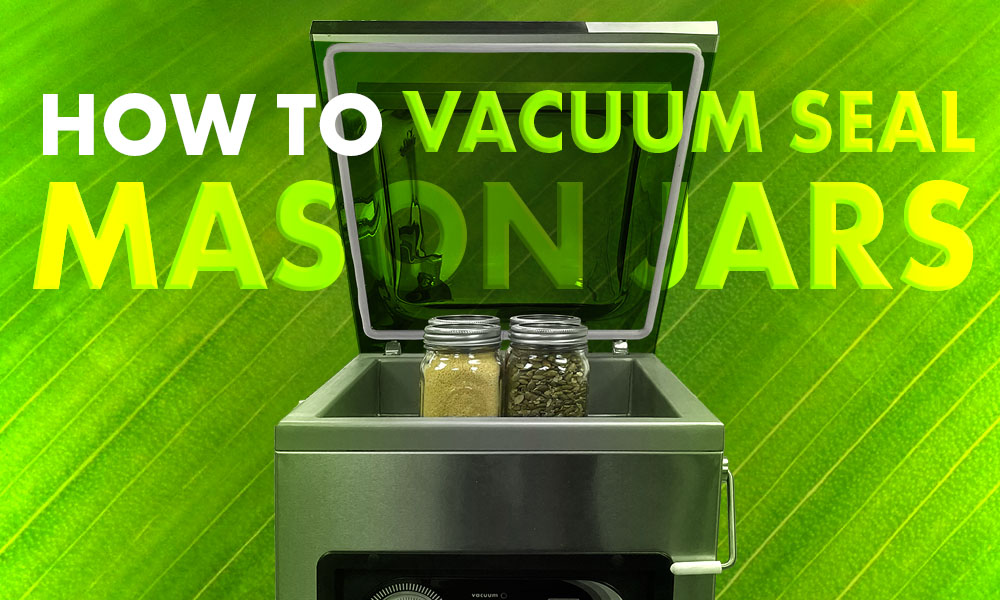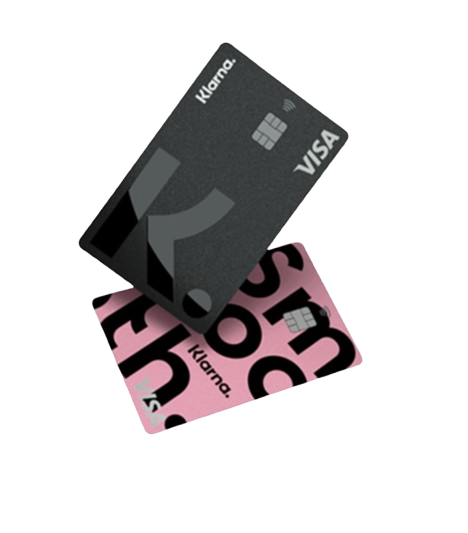How to Vacuum Seal Mason Jars | JVR Vac110
“Our stainless steel vacuum sealer can seal multiple mason jars simultaneously with both effectiveness and efficiency to secure a superb airtight seal.”
Today we cover the topic: “How to Vacuum Seal Mason Jars | JVR Vac110”
Today we will discuss how to vacuum seal Mason jars using the JVR Vac110 Chamber Vacuum Sealer. In addition to providing endless possibilities such as vacuum sealing meat to avoid freezer burn, providing a delicious sous vide experience right from your own home, or sealing cut bags to store your dried fruit, the Vac110 Chamber Vacuum Sealer is also well equipped to vacuum seal your Mason jars!
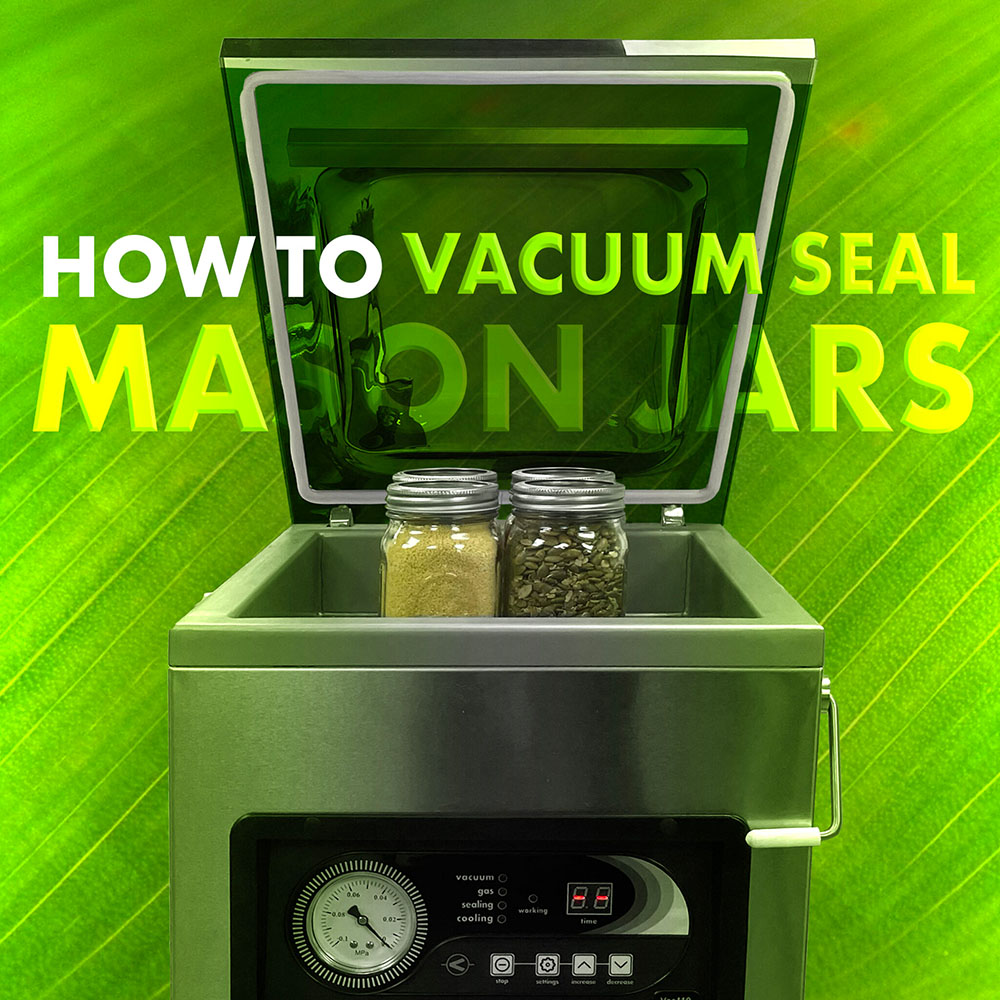
1) What Products can be Vacuum Sealed in the Mason Jar Using the Vac110 Chamber Vacuum Sealer?
2) What Size Mason Jars Can be Sealed?
3) How Many Mason Jars Can Be Sealed Simultaneously?
4) Do We Carry Alternative Options to Seal Larger Size Jars?
5) How to Vacuum Seal these Products Using the Vac110 Chamber Vacuum Sealer
6) How to Adjust Vacuum, Seal, and Cool Cycle Times
8) How to Begin the Sealing Process Once You Have Programmed Your Unit and Prepped Your Mason Jars
9) How Can You Check the Effectiveness of the Seal?
10) What if the Vacuum Sealing Process Does Not Activate a Seal?
Consistent adjustments have been made to the Vac110 Chamber Vacuum Sealer to ensure top notch quality and keep our product standing apart from vacuum sealers provided by our competitors. Our stainless steel vacuum sealer can seal multiple mason jars simultaneously with both effectiveness and efficiency to secure a superb airtight seal.
The following dives into explaining what can be vacuum sealed using this process as well as a detailed account of how you can carry out this process simply from your own countertop.
What Products can be Vacuum Sealed in the Mason Jar Using the Vac110 Chamber Vacuum Sealer?
Vacuum-sealing food is a great way to extend the shelf life of shelf-stable food to keep it fresh for meal prep!
Please note that vacuum sealing, in itself, does not replace the standard canning process. The difference is that standard canning involves a hot water bath meant to kill harmful bacteria making canned sauces, fruits, and vegetables safe to store in your pantry. On the other hand, vacuum sealing, alone, does not involve the hot water bath. Therefore, we recommend only vacuum-sealing shelf-stable foods to keep them from becoming stale, rancid, or tasteless.
Shelf Stable Dry Foods: Baking goods, grains, seeds, coffee beans, dry beans, cereal, chips, seasonings, nuts, cereal, snack sticks, etc.
Shelf Stable Liquid: Yes, you can package liquids in mason jars! Some shelf-stable liquids include oils or apple cider vinegar.
That being said, you could also consider storing vacuum-sealed mason jars in your fridge to use for purposes similar to canisters.
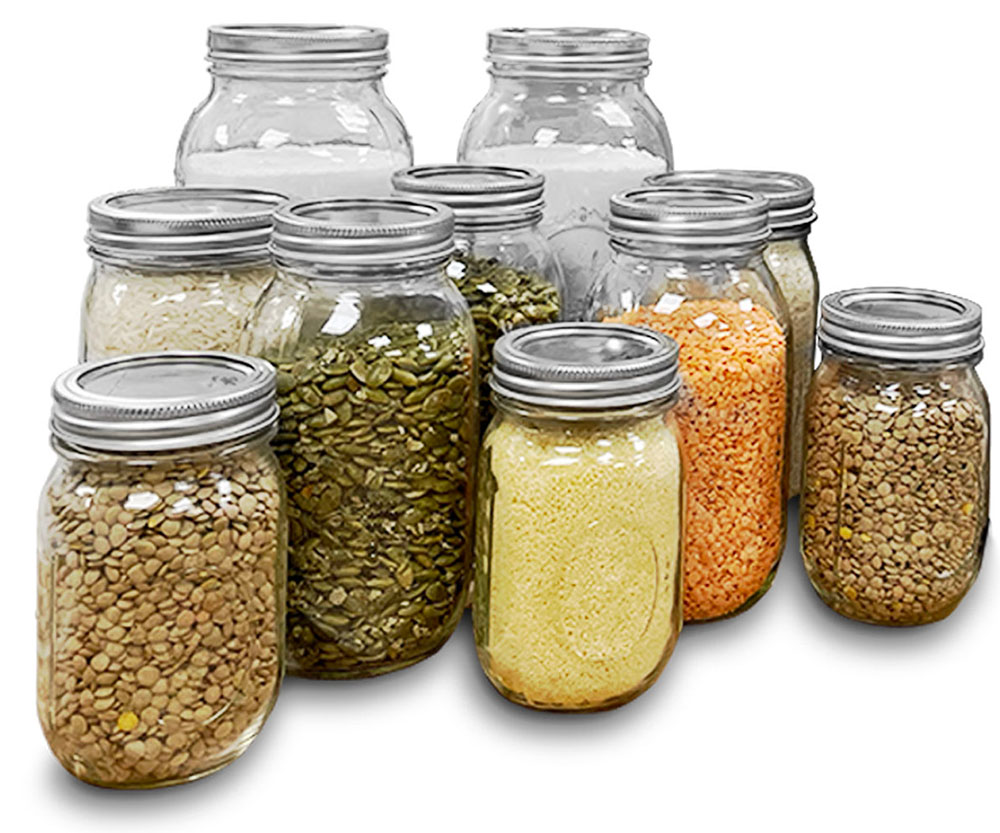
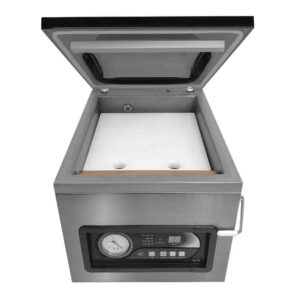
How Many Mason Jars Can Be Sealed Simultaneously?
1-4 of the 16 oz jars or 1-9 of jars of any size up to 8 oz can be sealed simultaneously using the Vac110 Chamber Vacuum Sealer.
What Size Mason Jars Can be Sealed?
The Vac110 Chamber Vacuum Sealer vacuum seals any Mason jar size up to 16 oz.
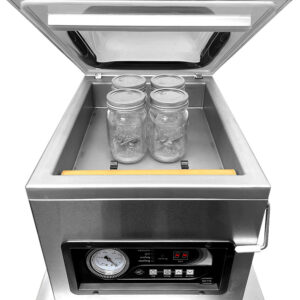
Do We Carry Alternative Options to Seal Larger Size Jars?
If you require space to seal 16 oz – 64 oz Mason jars, then we carry just the product for you! The Vac100 Chamber Accessory (3-gallon) seals 1-2 Mason jars up to 64 oz (½ gallon) simultaneously in addition to performing functions such as expedited brining, marinating, and more!
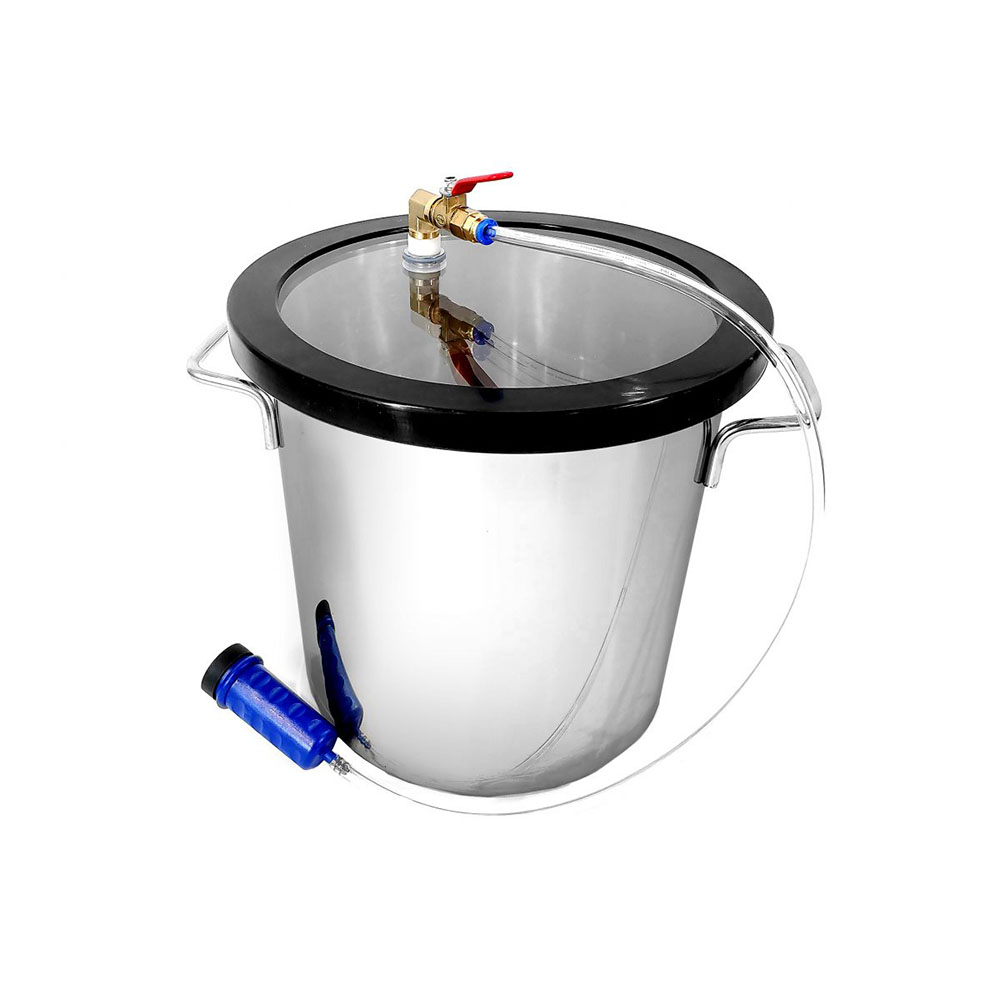
Click here to learn more about the JVR Vac100.
How to Vacuum Seal these Products Using the Vac110 Chamber Vacuum Sealer?
Overview of Vac110 Chamber Vacuum Sealer Control Panel
Stop: Stops any cycle (vacuum sealer or cooling cycle) and exits out of these cycles simultaneously.
Settings: Cycles through vacuum time, seal time, and cool time.
Increase/Decrease: Adjusts any of the cycle times when inside of Settings.

How To Adjust Vacuum, Seal, and Cool Cycle Times?
To access all cycle times hit “SETTINGS” one time. You should see the LED near VACUUM on the control panel. Now, hit “INCREASE” or “DECREASE” to adjust the VACUUM cycle time.
To access the next cycle time, simply hit “SETTINGS” again. It should bring you to the SEAL cycle and allow you to adjust the time accordingly using “INCREASE” or “DECREASE”.
Then hit “SETTINGS” one more time to reach the COOL cycle time and make any necessary adjustments.
Prep the Mason Jars
Before vacuum sealing, ensure your Mason jars are clean and sanitized. Wash them thoroughly and allow them to dry completely before placing your food product inside.
Once dry, pour the product you wish to store into the Mason jar, leaving a small amount of air space at the top to allow for the vacuum sealing process.
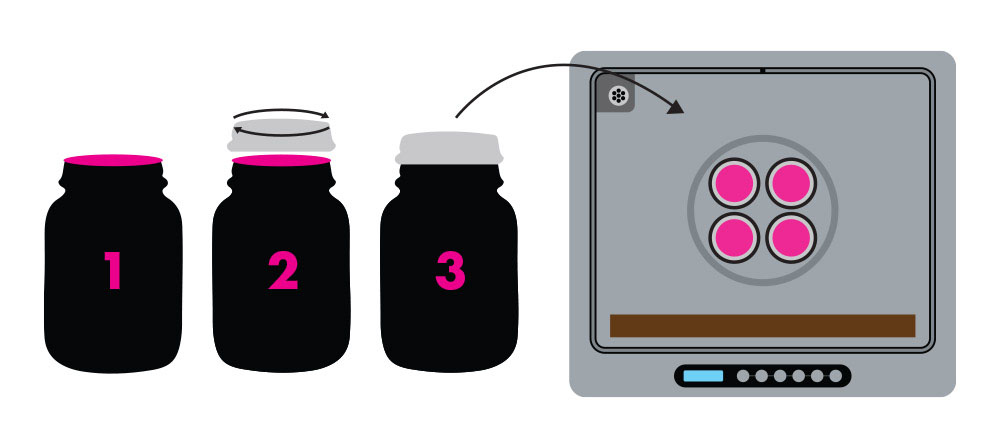
How to Begin the Sealing Process Once You Have Programmed Your Unit and Prepped Your Mason Jars
Once your Mason jars are prepped, you can begin the vacuum sealing process by pressing the appropriate buttons based on the size of jars and the adjustments you’ve made to the cycle times.
How Can You Check the Effectiveness of the Seal?
Check the effectiveness of your vacuum seal by pressing gently on the lid of the sealed jar. It should be tightly secured with no movement. If the lid is loose or pops, then the seal was unsuccessful, and you will need to repeat the process.
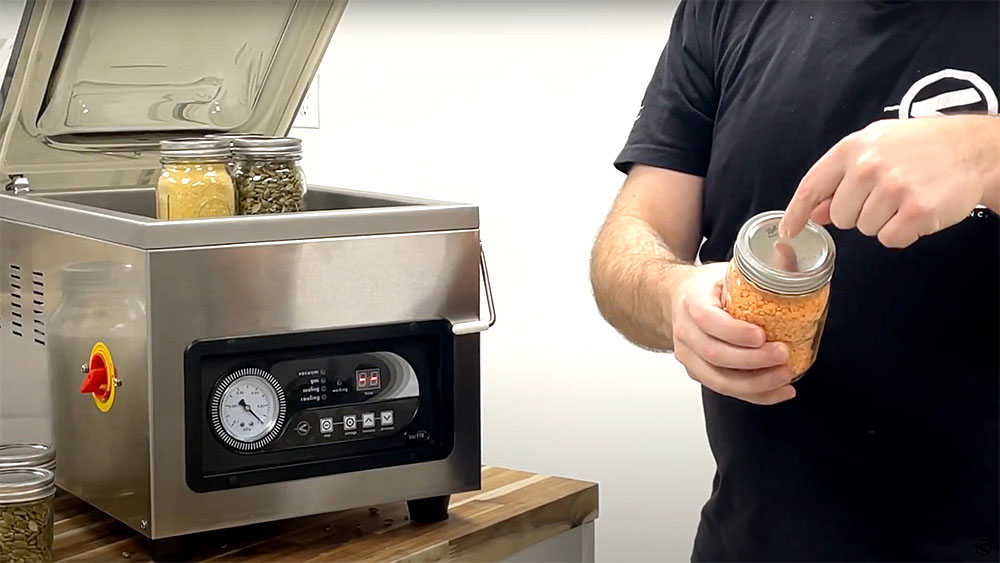
What if the Vacuum Sealing Process Does Not Activate a Seal?
If no dimple forms, this suggests you have a failed seal. Feel free to then repeat the process after confirming the mouth lid is on evenly over the mouth of the jar. Please do bear in mind that mouth lids can distort after a vacuum sealing in a Vac110 chamber vacuum sealer. If you suspect distortion, we suggest getting a new lid.
There you have it – yet another use the Vac110 can provide to make life a little simpler and more efficient in just a couple easy steps!

